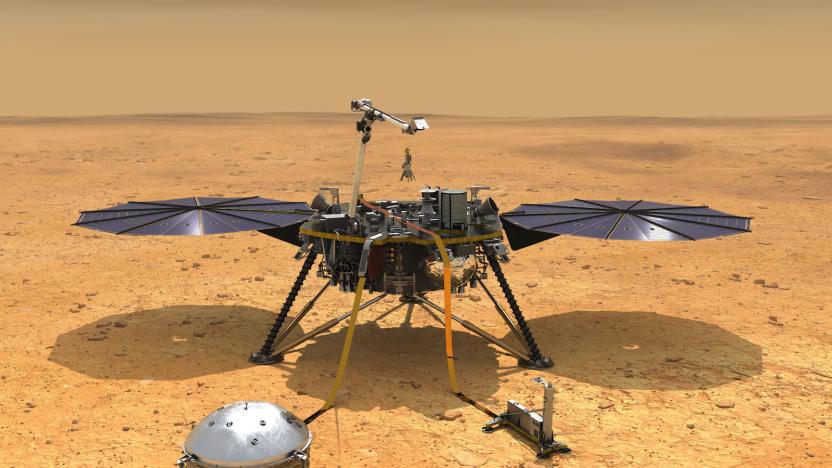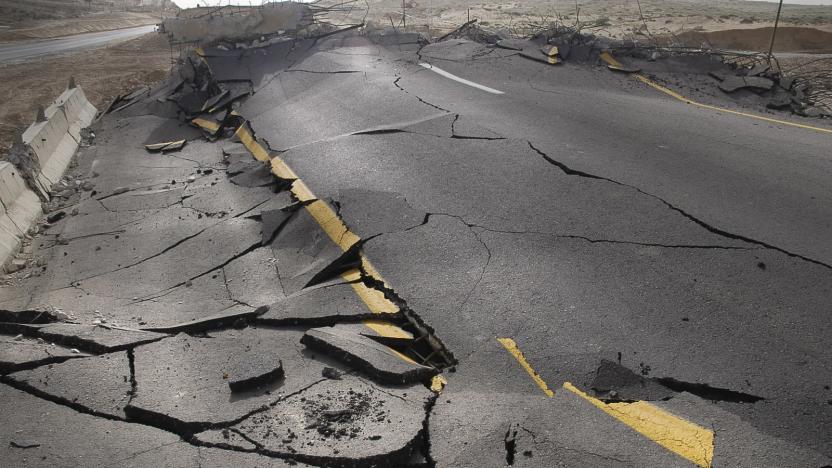seismology
Latest

NASA’s InSight lander has arrived on Mars
NASA's InSight lander has touched down on Mars, completing its over six-month journey to the planet. InSight, which stands for Interior Exploration using Seismic Investigations, Geodesy and Heat Transport, landed on Mars just before 3PM Eastern after a successful entry, deceleration and parachute deployment. The lander will soon get to work -- assuming its solar panels deploy correctly -- and will, for the first time, give us a look at the interior of our planetary neighbor.

Google and Harvard use AI to predict earthquake aftershocks
Scientists from Harvard and Google have devised a method to predict where earthquake aftershocks may occur, using a trained neural network. The researchers fed the network with historical seismological data, some 131,000 mainshock-aftershock pairs all told, and more accurately predicted where "more than 30,000 mainshock-aftershock pairs" from an independent dataset occurred, more accurately than previous ways like the Coulomb forecast method. That's because the AI method takes multiple aspects of stress shifts into account versus Coulomb's singular approach.

The Mars InSight lander is on track to launch in May
The InSight (Interior Exploration using Seismic Investigations, Geodesy and Heat Transport) lander has passed its last major environmental test ahead of a planned May 2018 launch to Mars. The thermal vacuum testing, or TVAC, lasted two weeks and simulates the harsh, stressful environment of space. "With InSight coming out of TVAC, the team has successfully completed the environmental testing phase and will now be finalizing launch preparations over the coming months," Scott Daniels, the InSight assembly, test and launch operations manager, told Space.com, which reported the news.

Fiber optic lines can double as earthquake detectors
You might not need an extensive sensor network or a host of volunteers to detect earthquakes in the future -- in fact, the lines supplying your internet access might do the trick. Researchers have developed technology that detects seismic activity through jiggling in fiber optic lines. Laser interrogators watch for disturbances in the fiber and send information about the magnitude and direction of tremors. The system can not only detect different types of seismic waves (and thus determine the seriousness of the threat), but spot very minor or localized quakes that might otherwise go unnoticed.

How seismographs can track battlefield bombings
A team of researchers from Washington University in St. Louis, led by Ghassan Aleqabi, recently stumbled upon a treasure trove of seismic data from a most unexpected source: an array of earthquake monitors installed in Iraq and originally used to keep tabs on Iran's nuclear tests. They also allow Iraqi universities to study small scale 'quakes. The 10 seismic monitoring stations were initially installed by the US, with Aleqabi's assistance, in 2005.

Scientists use earth-embedded GPS antennae to improve quake understanding
While GPS can do pretty much everything from provide basic map locations to help us engage in fun activities like geocaching, it had never occurred to us that it could also be used in seismology. Fortunately for folks living in quake country, geophysicists have figured out how to do just that. According to a paper that was just presented at the American Geophysical Union in San Francisco, a joint team from Stanford University and from the University of Indiana have figured out a way to use GPS antennae lodged deep in bedrock that can provide a new model for assessing risk of future earthquakes. Armed with these tools, scientists can now determine how quickly various points on the earth are moving, which allows for a better understanding of how tectonic faults shift. But if anyone's knowledge of earthquakes can be improved, it's certainly ours -- we had no idea they get shaken up occasionally over in Indiana.

Italian scientists develop quake detection theory
If research at the University of Naples and the National Institute of Geophysics and Vulcanology in Rome proves to be accurate, folks who live in earthquake country may eventually have a few more seconds to respond to oncoming earthquakes. New research published later this month in Geophysical Research Letters shows that primary waves (P waves) from earthquakes contain enough information about its magnitude and destructive potential to alert potential victims about their impending situation about 15 seconds beforehand. While that may not seem like very much time to dive under a table, it may be enough for automated systems to shut off gas pipelines or to halt high-speed trains. This sounds very much like that Japanese system we spotted in October -- whichever one is deployed first, we'll be glad to see it. [Via Slashdot]



